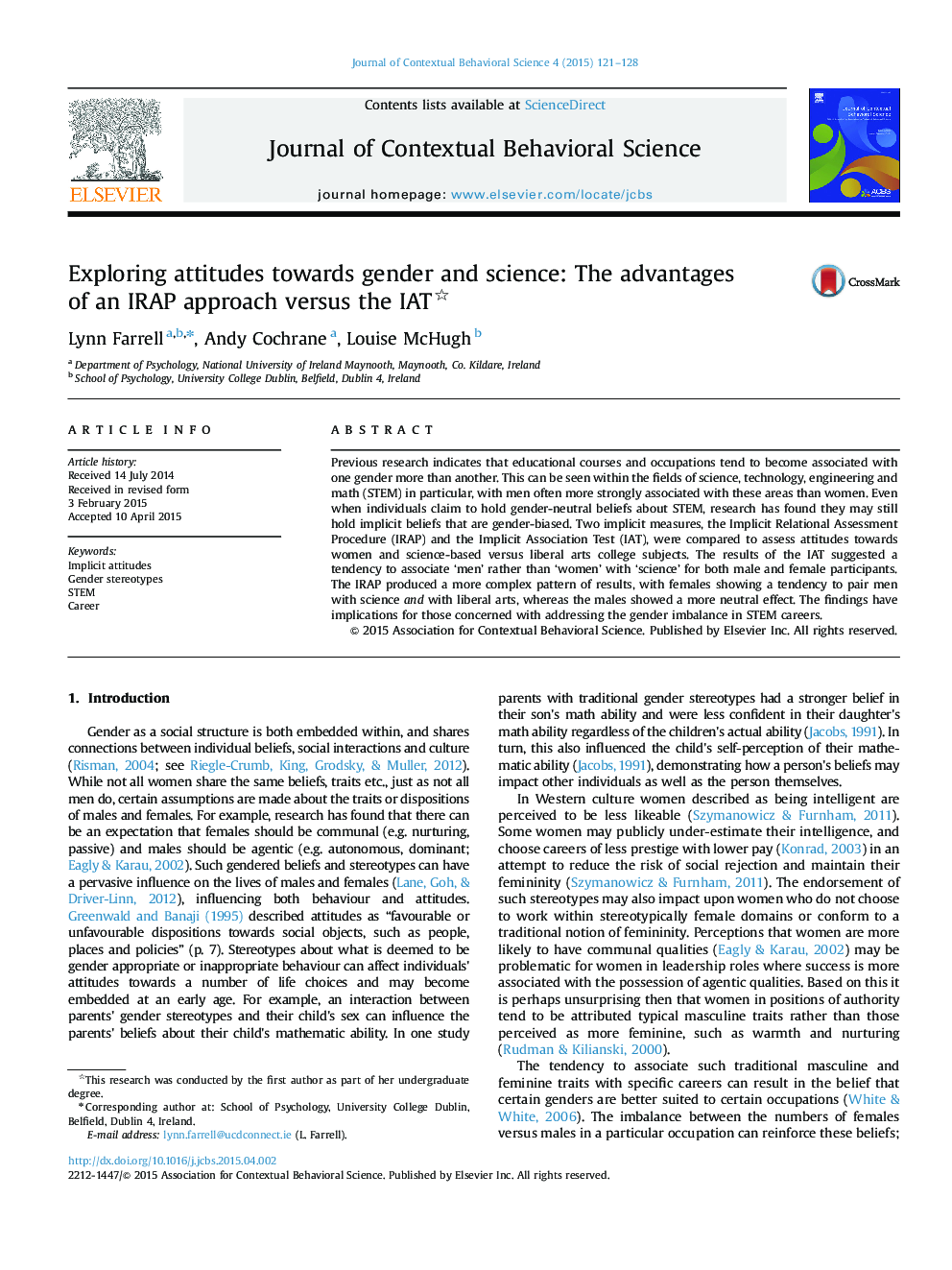| Article ID | Journal | Published Year | Pages | File Type |
|---|---|---|---|---|
| 911174 | Journal of Contextual Behavioral Science | 2015 | 8 Pages |
•We used the IAT and IRAP to examine implicit attitudes towards women and science.•The IAT revealed a male/science, female/arts bias for both males and females.•The IRAP further probed the nature of this bias, producing more complex results.•Through use of the IRAP females showed a male/science and male/arts bias.•Males showed more neutral effects with the use of the IRAP.
Previous research indicates that educational courses and occupations tend to become associated with one gender more than another. This can be seen within the fields of science, technology, engineering and math (STEM) in particular, with men often more strongly associated with these areas than women. Even when individuals claim to hold gender-neutral beliefs about STEM, research has found they may still hold implicit beliefs that are gender-biased. Two implicit measures, the Implicit Relational Assessment Procedure (IRAP) and the Implicit Association Test (IAT), were compared to assess attitudes towards women and science-based versus liberal arts college subjects. The results of the IAT suggested a tendency to associate ‘men’ rather than ‘women’ with ‘science’ for both male and female participants. The IRAP produced a more complex pattern of results, with females showing a tendency to pair men with science and with liberal arts, whereas the males showed a more neutral effect. The findings have implications for those concerned with addressing the gender imbalance in STEM careers.
